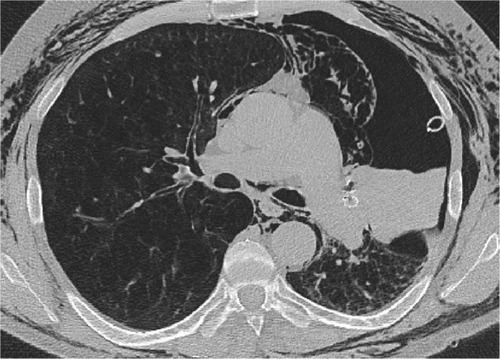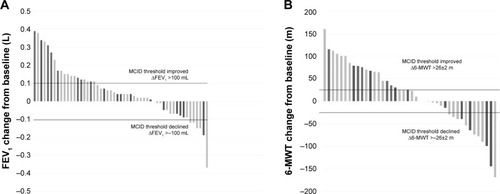Figures & data
Table 1 Baseline characteristics of all patients treated by valves
Table 2 Distribution of treated target lobe
Figure 1 Multi-detector CT.
Abbreviation: CT, computed tomography.

Table 3 Clinical outcome of all patients 3 months recovering after pneumothorax
Table 4 Clinical outcome of all patients with pneumothorax but without lobar atelectasis 3 months after recovering from pneumothorax
Figure 2 Response rate for FEV1 and 6-MWT.
Abbreviations: FEV1, forced expiratory volume in 1 second; MCID, minimal clinically important difference; 6-MWT, 6-minute walk test.

Table 5 Clinical outcome 3 months after recovering from pneumothorax of all patients with pneumothorax and lobar atelectasis
